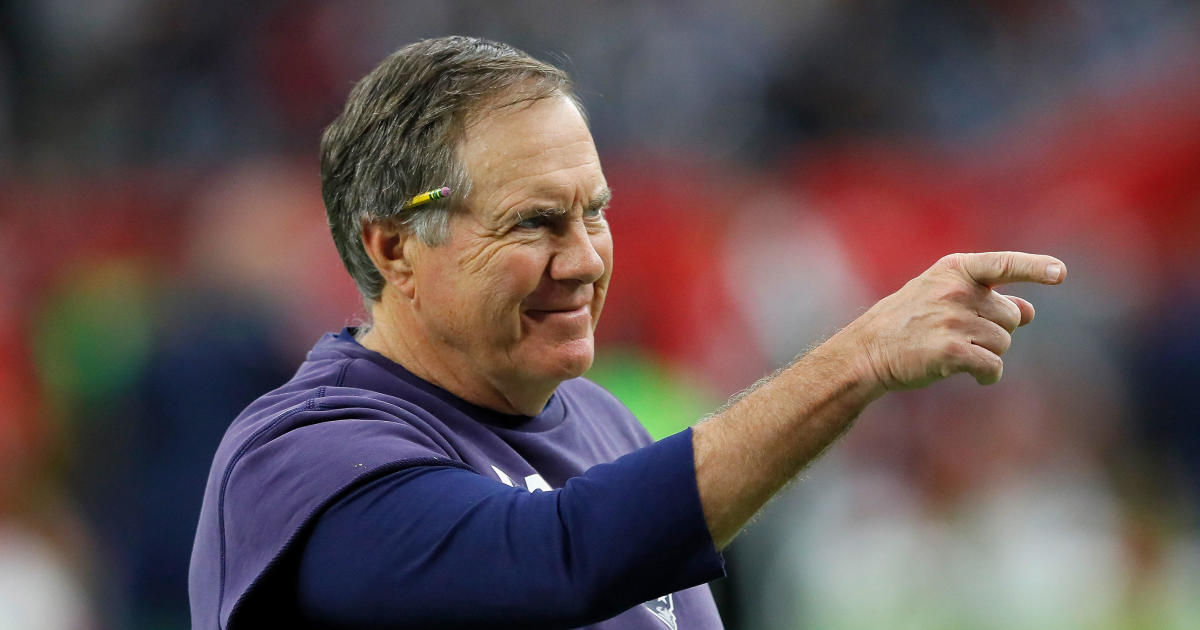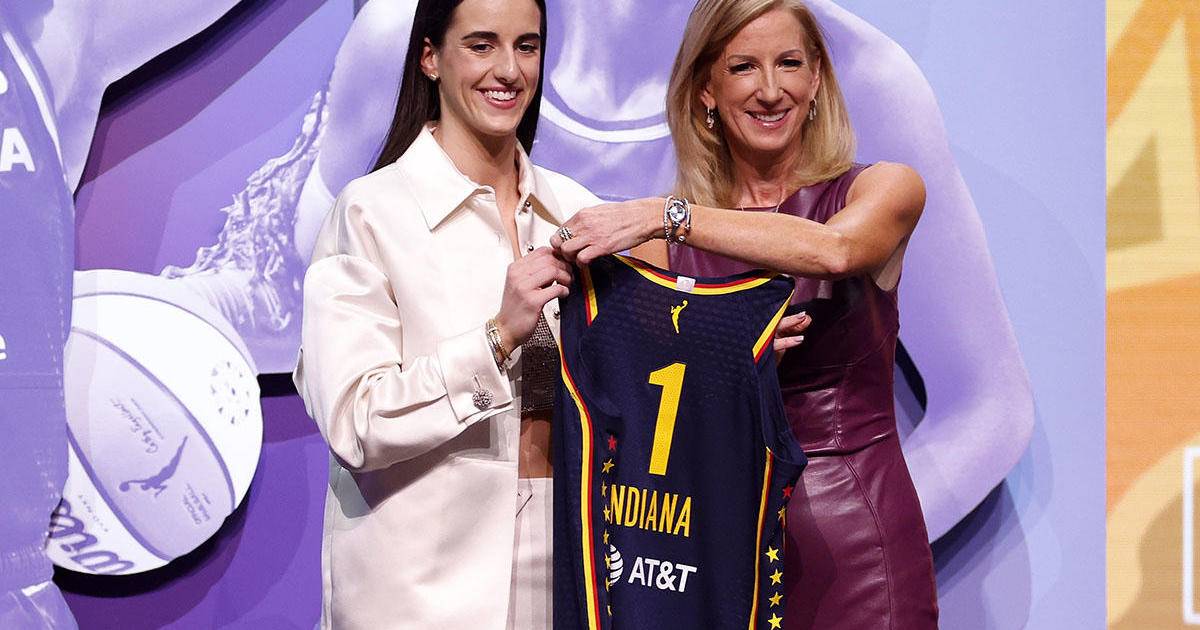Hurley: AEI's Analysis Of Wells Report Should Embarrass Goodell, Wells, NFL
BOSTON (CBS) -- A month ago, in the immediate wake of the release of the Wells report, I found it fairly obvious that the 243-page report was going to be interpreted however it best suited particular readers. Those who wanted to see the Patriots go down in flames would see it as an irrefutable beacon of truth, one that exposed Tom Brady and Co. as cheaters. Those who wanted to see the Patriots exonerated could find plenty in the report to dispute, thereby maintaining the idea that the Patriots never did anything wrong.
As someone who's dedicated more time to the subject than I'd like to admit, I still believe Jim McNally let some air out of those footballs. I base that mostly on the fact that he lied to NFL investigators multiple times about his trip into the bathroom, and even after he admitted to stopping in the bathroom, he claimed to have used a urinal. The bathroom he visited did not have a urinal.
So I think the guy let a few puffs of air out of the footballs, but I would guess it was an amount so insignificant that it could hardly register on any test. I would assume the action was done mostly as a response to NFL referee Bill Leavy's negligence in Week 7, when the Patriots balls were jacked up to 16 PSI. I think that Brady screamed at John Jastremski after that game, saying something along the lines of, "Listen, I don't care, just make sure I never get footballs like that in a game." And so, I think McNally "took the top off" the balls, as it's known, just to ensure the footballs weren't rock hard. I do not believe the amount of air let out of the footballs was significant in any way, and I therefore believe the response to the situation in totality has been a giant overreaction.
If you'll notice, there's an emphasis on eight points made there, because they're all based on what I think. And that's an issue that most people aren't considering: It really doesn't matter what you think. It doesn't matter what I think. What should matter is what's proven. And there can be no debate about this: The Wells report proves nothing.
Now, this has been stated time and time again by anyone who's taken the time to read the entire report, but a new study from the American Enterprise Institute has now made headlines for diminishing the credibility of Ted Wells' entire report.
The report, released Friday afternoon in advance of a Sunday New York Times story, concludes that scientific firm Exponent used a flawed approach to determine that the Patriots' footballs deflated more than the Colts footballs on the night of the AFC Championship Game.
"The Wells report conclusions are likely incorrect," the report states, "and a simple misunderstanding appears to have led the NFL to these incorrect conclusions."
Fortunately, the AEI report is not interminably long, so it's easy to run through its main points.
--Overall the NFL, Roger Goodell and Ted Wells should all be embarrassed -- very, very embarrassed. It's one thing when a lowly sports writer tears apart the obvious holes in the Wells report. Such digging can be easily disregarded as biased or slanted, based solely on the geographical location of its origin.
But this? This is a group of educated men -- Kevin A. Hassett, Joseph W. Sullivan and Stan A. Veuger -- with no financial or personal stake in the situation and with mounds of facts and data. And they are completely dismissing the data used in the report which led to the unprecedented punishment handed down to the Patriots and Tom Brady.
"The way the evidence is presented reflects pretty poorly on the authors of the report as a whole," Veuger told 98.5's Adam Jones on Friday.
--The immediate reaction to such a report consists mainly of folks rushing to figure out the bias of the people who put it together. (Interestingly, this same suspicion did not take place after the release of the NFL-sponsored Wells report, even though nobody in the country believed the results of the NFL-sponsored Mueller report just a few months earlier.)
And so, when it was uncovered that "The Kraft Foundation" contributes to AEI, people believed they found the smoking gun. Except, well, that's the wrong Kraft.
So, why would these gentlemen take the time to run the data that showed the Wells report proved nothing in the way of illegal deflation of footballs? That's simple. They say it -- without saying it -- in the first paragraph of their report.
In 2012, during the "Bountygate" controversy, Hassett and Veuger performed "a statistical analysis of injury data" in 2012 to determine whether or not the Saints injured more opponents than other teams.
"We found that, in fact, the Saints players injured fewer competing players than all but one team during the first year of their supposed 'bounty' program, and that there was no evidence over the entire period that the Saints injured more players than the typical team," the report states. "Following our testimony before former National Football League (NFL) Commissioner Paul Tagliabue, the NFL's penalties against the Saints players were withdrawn, and news accounts have pointed to our analysis as contributing to that decision."
News accounts have pointed to our analysis as contributing to that decision. That right there, my friends, is a nice Humblebrag (RIP Harris Wittels).
Why are they doing this? If you had the chance to influence the world's most powerful sports organization for the second time in a few years, you wouldn't be interested in doing so? Of course you would. It sets up some primo Humblebrag opportunities.
--The crux of the report's findings is simple. For one, the Wells report does not account for all four possibilities regarding the use of gauges when measuring the footballs.
On this point, AEI says there are four possibilities for the gauges used to measure the footballs:
1. Patriots balls were measured by the Logo gauge, Colts balls were measured by the Non-Logo gauge.
2. Patriots balls were measured by the Non-Logo gauge, Colts balls were measured by the Logo gauge.
3. Both Patriots and Colts footballs were measured by the Logo gauge.
4. Both Patriots and Colts footballs were measured by the Non-Logo gauge.
"[Referee Walt] Anderson remembers that he used the Logo gauge before the game, but the Wells report, in a direct contradiction of that recollection, concludes that he used the Non-Logo gauge before the game," the report states.
You might remember that after the release of the Wells report, Pro Football Talk picked up on this discrepancy. Wells was asked about this issue -- that is, discrediting the recollection of the key witness in his report, the same witness whose memory and recollection was praised as trustworthy and absolute in other parts of the Wells report -- in a conference call with reporters, and he stated, "it doesn't matter because regardless of which gauges were used the scientific consultants addressed all of the permutations in their analysis."
AEI responded, "This statement is factually incorrect. The Wells report neither provides evidence for every possible permutation of gauge use nor proves that the report's conclusions are independent of gauge use."
The AEI crew then tested all four scenarios.
"These results, in aggregate, contradict Wells's claim that the analysis yields the same result regardless of which set of assumptions about the two gauges was used," the report states. "Even an unequivocal finding of a statistically significant difference between the pressure drops of the Patriots and of the Colts does not necessarily constitute evidence of illegal deflation."
On that point, the AEI group slightly misses the point, because the Wells report never states definitively that illegal deflation occurred. Rather, the Wells report asserts that illegal deflation "more likely than not" took place. Still, the AEI crew exposes methods that were either careless or intentionally deceitful. Neither of those explanations look good for Wells, Exponent or the NFL.
--The AEI group's second key analysis centered on the timing of the measurements. The Wells report details that 11 Patriots footballs were measured in a room between 71 and 74 degrees Fahrenheit. The Colts' balls were then measured after the Patriots' footballs, as evidenced by the crew running out of time before the end of halftime to measure more than four of them.
The Wells report does not address the "straightforward physics" that footballs given time to warm up will have higher pressure levels than footballs measured immediately after being taken out of the cold.
"The fact that the officials ran out of time is highly material," writes the AEI group. "It implies that the Colts balls were inside a warm room for almost the entire halftime before they were measured and thus had a chance to warm up."
The AEI group criticized the officials for failing to record the precise time of their measurements of the footballs, thereby leading to unreliable data.
And in fact, the AEI people conclude that based on the timing of the measurements, the Patriots' footballs measured right within the expected range, as laid out by the Ideal Gas Law. This is a serious hit for Dan Shaughnessy, who has regarded "the Ideal Gas Law people" as crazy kooks, rather than people relying on scientific equations.
"The Patriots balls do not significantly deviate from the prediction of the Ideal Gas Law in the direction that one would expect based on the Wells report's conclusions and the NFL's disciplinary measures," the report states. "The only significant result, in fact, indicates that the Patriots balls were more inflated than the Ideal Gas Law would imply."
Score one for the "the Ideal Gas Law people."
The AEI group goes on to not just state that the Ideal Gas Law explains some of the measurements. They say the discrepancy in measurements between the Patriots footballs and Colts footballs can be "fully explained" by the order in which the footballs were tested.
The AEI folks also use the intercepted Patriots ball as a "crucial piece of evidence supporting this scenario [which] was overlooked in the report's analysis." The Wells report states that the intercepted football came in at the high end afforded by the Ideal Gas Law, that it deflated a full 1.0 PSI. However, the odds of that football coming in at the high end are 1 in 300.
"Our conclusion that the warming of the footballs during halftime is the key factor overlooked in the Wells report is supported by the observation that the readings of the intercepted Patriots football, measured separately from the other Patriots balls, came in almost precisely at the prediction of the law," the report states. "Under the hypothesis asserted by the Well[s] report, the odds of this Patriots ball matching the Ideal Gas Law prediction were between 1 out of 3 and 1 out of 300. It is therefore unlikely that the Patriots deflated the footballs."
--Adding to the authors' credibility is their citation of a CBS Boston story just 240 words into their report. That is some excellent citation, gentlemen.
I happen to know the author of that article you cited, and he is a strapping young man with great integrity.
--Bottom line: The "integrity" of Ted Wells' report, and therefore the basis for Roger Goodell's issuance of punishment, should very much be in question.
Granted, the work of the AEI trio was not entirely groundbreaking. An intelligent person named Drew Fustin shared a similar report of his own back in May, one that used scientific principles to tear holes into the Wells report and reach similar conclusions. And even those of us who never advanced beyond 10th grade chemistry could still easily find the flaws in the report issued by Wells. His emotionally unstable defense of his work did not do much to help quell those concerns.
And now, the people who helped contribute to the elimination of the Saints' suspensions have spoken. They've taken down Goodell once, and they seem poised to do it again, using nothing more than common sense and a few basic principles.
In terms of options for a response, the NFL has just a few choices. Goodell could admit that he paid a reported $5 million to people who did not consider simple, basic possibilities. That might not go over too well. Or, Goodell could accept the findings of AEI, publicly chastise Exponent and Wells for doing a poor job, and relinquish the heavy-handed, unprecedented punishment he's already issued. That will, obviously, never happen.
Lastly, Goodell could choose his favorite option: Say nothing publicly, wait for things to die down, then offer poorly reasoned, duplicitous deflections at some press conference at a league event which requires him to speak. Considering this is the road most often traveled by the commissioner, it's likely to be the route he chooses once more.
Read more from Michael Hurley by clicking here. You can email him or find him on Twitter @michaelFhurley.




